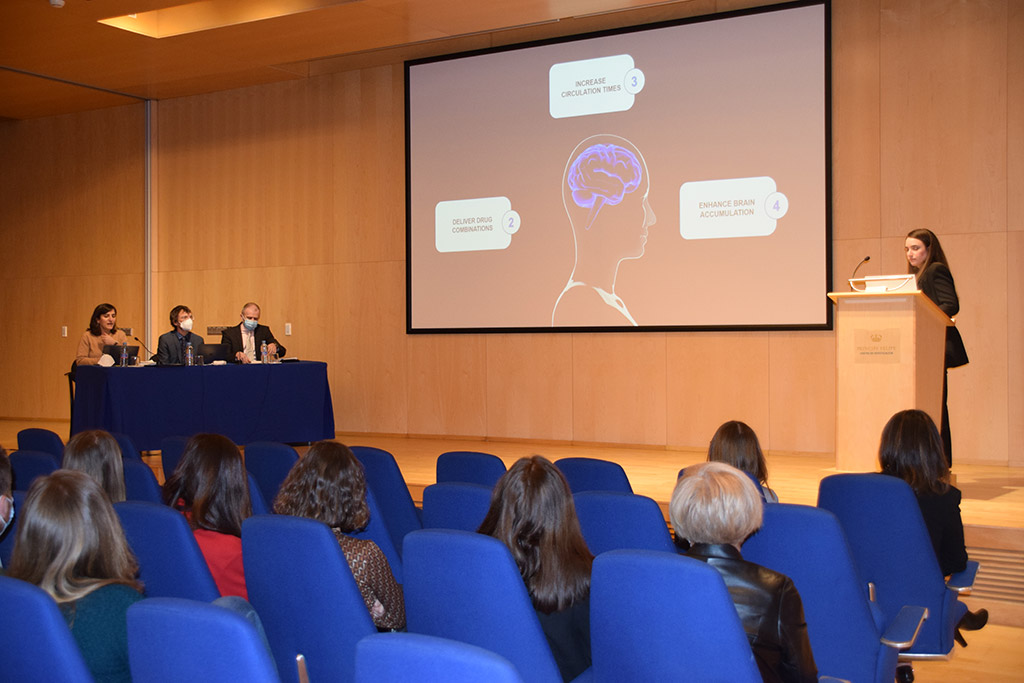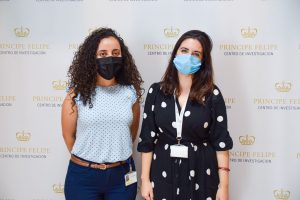Defensa de Tesis Doctoral: “Design of novel targeted polymer therapeutics as combination therapy for the treatment of brain metastasis-overcoming the blood-brain barrier.”
Doctorando: Fernanda Rodríguez Otormin
Directoras: María J. Vicent, Aroa Duro Castaño
Defensa: 07 de abril de 2022, 12:00 h
Breast cancer represents the second most common cause of brain metastasis, with HER2-positive and triple negative breast cancer (TNBC) displaying the highest incidence. Brain metastases entail a poor prognosis (survival of TNBC patients who develop brain metastasis ranges from three to four months) and neurological impairment. Clinical management of breast cancer brain metastasis relies on local approaches as the blood-brain barrier/blood-tumor barrier hinders the accumulation of systemically administered therapies to therapeutic concentrations in the brain. In this context, we developed novel biodegradable and biocompatible targeted polypeptide-drug conjugates for the treatment of brain metastasis via intravenous administration, with a focus on TNBC. Following a rational design approach, we first developed a polypeptide-drug combination conjugate with optimized drug loading and linking chemistries as a metastatic TNBC treatment. We employed star-shaped poly-L-glutamic acid (St-PGA) as a polymeric carrier and synthesized St-PGA-based single and combination conjugates using various drug ratios and linkers. Conjugate characterization and biological evaluation using state-of-the-art physico-chemical characterization techniques and well-established in vitro and in vivo models allowed the identification of optimal drug ratios and linking chemistries to obtain a combination conjugate with robust anti-tumor and anti-metastatic activity. To further improve treatment efficacy, we developed a bottom-up strategy for the synthesis of St-PGA-based combination conjugates by exploiting carrier self-assembly in water and reversible stimuli-responsive bonds for nanosystem stabilization. During the synthesis of building blocks for this strategy, we discovered the influence of hydrophobic moieties in the self- and co-assembly of St-PGA conjugates; this altered behavior ultimately hampered the development of an efficient redox responsive stabilization strategy.Therefore, we developed a brain-targeted combination conjugate using St-PGA as a polymeric carrier and the previously identified optimal drug ratio and linking chemistry as the final step in the development of a novel TNBC brain metastasis treatment. We developed an efficient and reproducible protocol for Angiopep-2 conjugation to St-PGA in aqueous media to provide brain targeting. The targeted conjugate accumulated in the brain of healthy mice, supplying a 1.4-fold accumulation compared with the untargeted counterpart. The orthogonal chemistries employed for drug and Angiopep-2 conjugation allowed the synthesis of a St-PGA-Angiopep-2 combination conjugate and the evaluation of anti-metastatic activity in a relevant TNBC brain metastasis mouse model, which provided promising therapeutic outcomes.
Overall, this thesis provides evidence to support the use of St-PGA as a polymeric carrier, especially for the development of rationally-designed therapies to treat breast cancer-associated brain metastasis.





